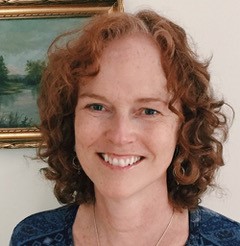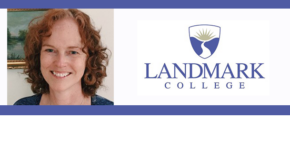 Changing from deficit to diversity could lead to better outcomes for schools and society.
Changing from deficit to diversity could lead to better outcomes for schools and society.
Lynne Shea, professor of liberal studies at Landmark College, examines how catering to neurodiversity can help more people get their education.
Lynne Shea has served in many capacities at Landmark College, having chaired the English and humanities departments, directed the Landmark College Institute for Research and Training (LCIRT), chaired the Faculty Senate, and served as a full professor in the English department.
From Disability to Diversity
Students who have learning differences, such as dyslexia, attention deficit disorder, and autism spectrum disorder make up approximately 20 percent of the population, and are increasingly enroll in college. These so-called invisible disabilities affect learning in diverse ways yet most students who received special education in K-12 schools–83 %–don’t disclose their diagnosis or seek accommodations in college.
Significantly, 60 % of students with disabilities enroll in postsecondary education but more than half will not graduate. This phenomenon impacts not only the individual who fails to thrive but also imposes a cost on institutions, employers, and, broadly, society.
Based on recent research in the fields of neuroscience and genetics, it is more accurate to view learning differences through the lens of cognitive neurodiversity. Better understanding of diverse cognitive profiles is leading educators to improve curricular and program design to optimize students’ success and graduation rates. Recommended practices include promoting universal design for learning, developing college-wide support systems for students who learn differently, and providing training to both faculty and staff to increase understanding and reduce the stigma often associated with neurodivergence.
Reframing learning differences from a medical model that emphasizes deficits to a diversity model that affirms the value of every student is a choice that can create greater equity in education. By acknowledging the role of both the individual and the learning environment in creating disparate outcomes for a significant percentage of the population, we can potentially improve higher education for all learners.

Comments
One response to “Lynne Shea, Landmark College – From Disability to Diversity”